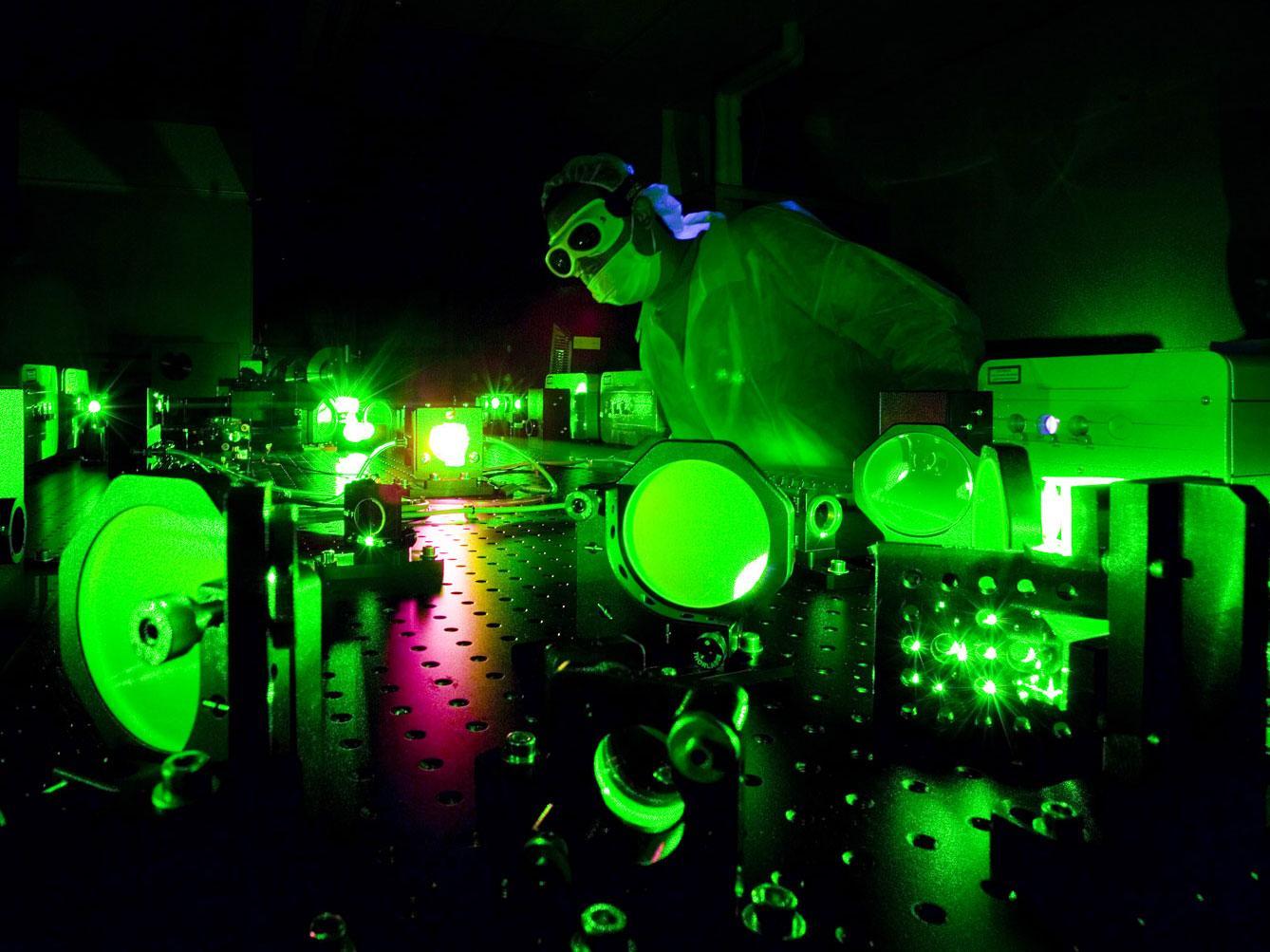Billion suns: Scientists create brightest light ever produced on Earth
‘Unimaginably’ strong laser beam acts like an X-ray and could be used to spot tiny fractures and tumours in the body that would otherwise be missed

Your support helps us to tell the story
From reproductive rights to climate change to Big Tech, The Independent is on the ground when the story is developing. Whether it's investigating the financials of Elon Musk's pro-Trump PAC or producing our latest documentary, 'The A Word', which shines a light on the American women fighting for reproductive rights, we know how important it is to parse out the facts from the messaging.
At such a critical moment in US history, we need reporters on the ground. Your donation allows us to keep sending journalists to speak to both sides of the story.
The Independent is trusted by Americans across the entire political spectrum. And unlike many other quality news outlets, we choose not to lock Americans out of our reporting and analysis with paywalls. We believe quality journalism should be available to everyone, paid for by those who can afford it.
Your support makes all the difference.Scientists have created the brightest light ever produced on the Earth, shining a billion times stronger than the surface of the sun.
And, when they shone the “unimaginably” bright beam, the researchers discovered it could be used as a new type of X-ray, capable of taking higher resolution images than the traditional kind.
These could be used in hospitals but also by engineers, scientists and for security purposes.
When light strikes an object, it scatters – an effect that enables our eyes to see it.
Normally an electron scatters just one photon of light at a time, but the light beam produced in the University of Nebraska-Lincoln’s Extreme Light Laboratory saw nearly 1,000 photons scattered at a time.
Dr Donald Umstadter, one of the researchers, said: “When we have this unimaginably bright light, it turns out that the scattering – this fundamental thing that makes everything visible – fundamentally changes in nature.
“It’s as if things appear differently as you turn up the brightness of the light, which is not something you normally would experience.
“[An object] normally becomes brighter, but otherwise, it looks just like it did with a lower light level.
“But here, the light is changing [the object’s] appearance. The light’s coming off at different angles, with different colours, depending on how bright it is.”
He said the X-ray properties of the light could be used to take three-dimensional images down to the nanoscopic scale.
This could be used to find tiny tumours or microfractures that are currently missed by conventional X-rays, the researchers believe.
It may also be useful as an ultrafast camera to take images of chemical reactions or electrons as they move, among other potential uses by scientists.
“There were many theories, for many years, that had never been tested in the lab, because we never had a bright enough light source to actually do the experiment,” Dr Umstadter said.
Join our commenting forum
Join thought-provoking conversations, follow other Independent readers and see their replies
Comments